1.7 million of them were made and the car was a staple of European roads for decades. And yet, few people ever seem to talk about the Peugeot 305.
It was an excellent family car. Typically French with a soft and slightly rolly ride but sharp handling. It was reliable and tough, too, particularly with the excellent XUD family of diesel engines. What it wasn’t was exciting, fast, or exotic, which is probably why it goes wanting for attention. Years have been spent on the minutiae of Shelby Mustangs, but much of the 305’s creation remains shrouded in mystery.
There actually was a “sporty” version – 1984’s 305 GTX with 110 horses, tape stripes, and alloys, but its performance was leisurely by the standards of the day. Even this “hot” version was a model of quiet competence.
In hindsight, the 305 was at the crossroads of the old Peugeot and the new. Much of the architecture underneath the car was inherited from the 304. The 304 hailed from Peugeot’s very conservative past despite its front-drive setup, and the 305 continued in sober solidity. But it also heralded the coming of the “05s” and introduced some of the things that would define Peugeots in the 1980s.
Originally, the plan was for something a bit more ambitious than a reworked 304, but those plans were scuttled by high costs and the acquisition of Citroën at the end of 1974. Instead, the car followed a more conservative direction, but with a major update in 1982.
Programme J to D4
The 305 was intended as a combined replacement for the 304 and the 404, two very different cars. In size, the car would be close to the 404, but it would also have an engine range that overlapped both. Work began in 1971.
Programme J, as it was called, centered around 1.4-1.8L fours set up transversely and driving the front wheels. Each time the engineers tried to design it, it ended up costing too much – there was a J18 prototype in the 1,600-cc class, too expensive. Then there was a J16 prototype that re-used the 404’s engine and was a little bigger. Too close to the 504, upper management felt, and too expensive again to build.
Following those there was the J23 prototype which seemed to get the car basically right. Dimensionally, the J23 was pretty close to what became the 305, and it was similar in design too, if rather heavily Renault-influenced in its frontal appearance. Since the car was still in the mechanical design phase, the styling of the J23 was done by the in-house team – Paul Bouvot and Gérard Welter, who would go on to style the 205.
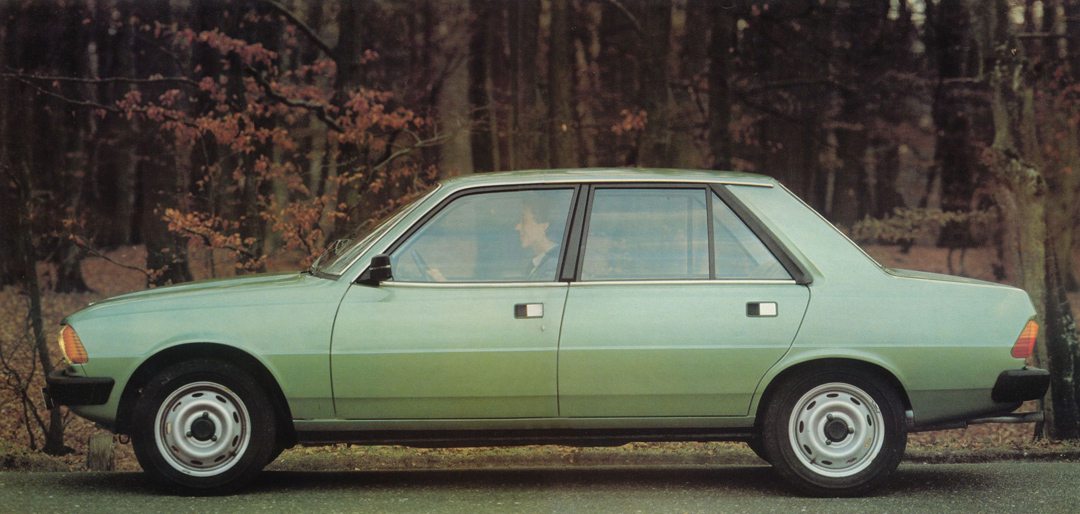
The J23 featured many advanced safety items, and indeed as safety vehicles cropped up from most manufacturers in the early 1970s, Peugeot put new emphasis on the crashworthiness of the J23. Engineer George Oberlé, later a program director in the 1980s, even got a patent on a new type of collapsible steering column for the project.
A safety car directly based on the J23’s shell, the Peugeot VSS (Véhicule Synthèse Sécurité), whetted the public’s appetite in late 1974. It featured considerable side-impact reinforcement and energy-absorbing elements throughout the shell. One goal seems to have been improving crashworthiness in offset impacts, something modern designers constantly think about. The VSS also appeared at shows in 1975, but by then the J project was essentially over.
Two events caused Programme J to come to a grinding halt. The first was OPEC, which blew apart many projects industry-wide, but the J23 probably shouldn’t have been one of them. It was meant to be a light and fairly economical car. The tooling program for the car had already begun, and it was a costly investment at a difficult time.
Why so difficult? Because for many months in 1974 Peugeot had been in negotiations with the French Government to come to Citroën’s rescue, which it did that December. That was the second factor. The J23 and several other projects were cancelled. That may have upset the designers, but Peugeot managed to get through the difficult transition period pretty well. CEO Jean Baratte boasted in 1977 that Peugeot hadn’t had to have a layoff in 30 years.
That didn’t mean, however, that Peugeot didn’t still need replacements for the 304 and 404. The 304 dated only to 1969, but it was really just an enlarged version of the 1965’s 204. It looked a bit old fashioned in the mid-1970s, but was still a decent seller if living on borrowed time. The 404, from 1960, was at the end of its original production life and was phased out in France in 1975 (production would continue in Kenya into the 1990s). A new product was needed to fill the gap.
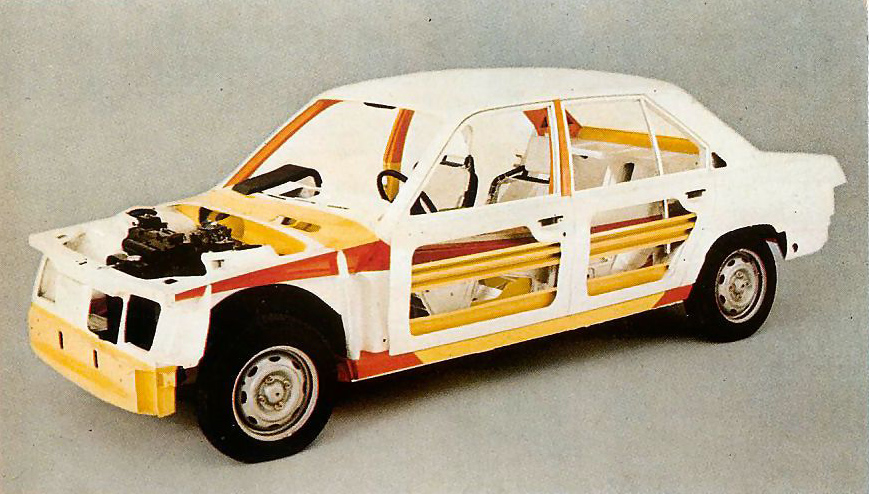
With J23 gone, Peugeot needed to find a cheaper way to build that successor, and the answer was to simply mine the 304’s architecture and update it in every way that counted.
Project D4, which became the 305, was a blend of the 304’s platform, still pretty competitive thanks to its advanced nature when new, styling elements cooked up during the J23 process, and safety improvements designed into the VSS.
The D4 would be larger than the 304 and aimed at the Renault 12 and Simca Alpine, but be a little smaller and other mainstream sedans like the Opel Ascona. It bridged the gap between the 304 and the larger 504 pretty well and thus absorbed customers who might have bought a VW Golf or might have bought an Ascona equally well.
Although the D4 was nominally styled by Pininfarina, it’s not clear what role Pininfarina really played or who worked on it there (at least, not at the time of this writing). The basic styling seems to have come from Bouvot and Welter, the latter of whom would go on to style the 205 in the 1980s.
There were several more linear ideas that were explored during the J23 process, including a very Paulo Martin-like notchback coupe proposal. It’s possible Martin or Aldo Brovarone consulted on refining the basic shapes done at Sochaux for the final result. There were also sketches of a hatchback coupe, but no 305 coupe ever materialized.
The interior of the 305 was designed mostly by the famous Paul Bracq, who had moved to Peugeot after his time at BMW. It was minimalist and relatively austere, but that was what had worked on the 204 and 304, and French customers liked what they saw.
Peugeot 305, not 405?
Peugeot’s Centre D’etudes (R&D) facility was run by Marcel Provent at the time of the 305’s debut, and much of the technical work to create and improve the car was done there. Provent was a veteran of the 304, and the adaptation wasn’t hard. It was marginally wider and longer, and much sleeker looking, but not so different underneath.
Because much of the running gear came from the 304 and 1975 saw sales of that car rise, it got some updates during the run up to the Peugeot 305, namely an updated 1,290-cc XL5 engine. The XL family of Peugeot engines had been originally designed for the front-drive 204 and grown into the 304. Now it grew into the 305. These were modern machines – transverse front drivers with McPherson struts up front and trailing arms and coil springs out back. This setup was still modern in 1976, and needed little change.
There was not to be a coupe, but the 305 would bow in the most popular styles of the 204/304 – a 4-door sedan, a 5-door wagon, er, Break, and a 3-door van that eliminated the rear doors and paneled up the windows. It was a very attractive car, but a conservative one, in typical Peugeot fashion.
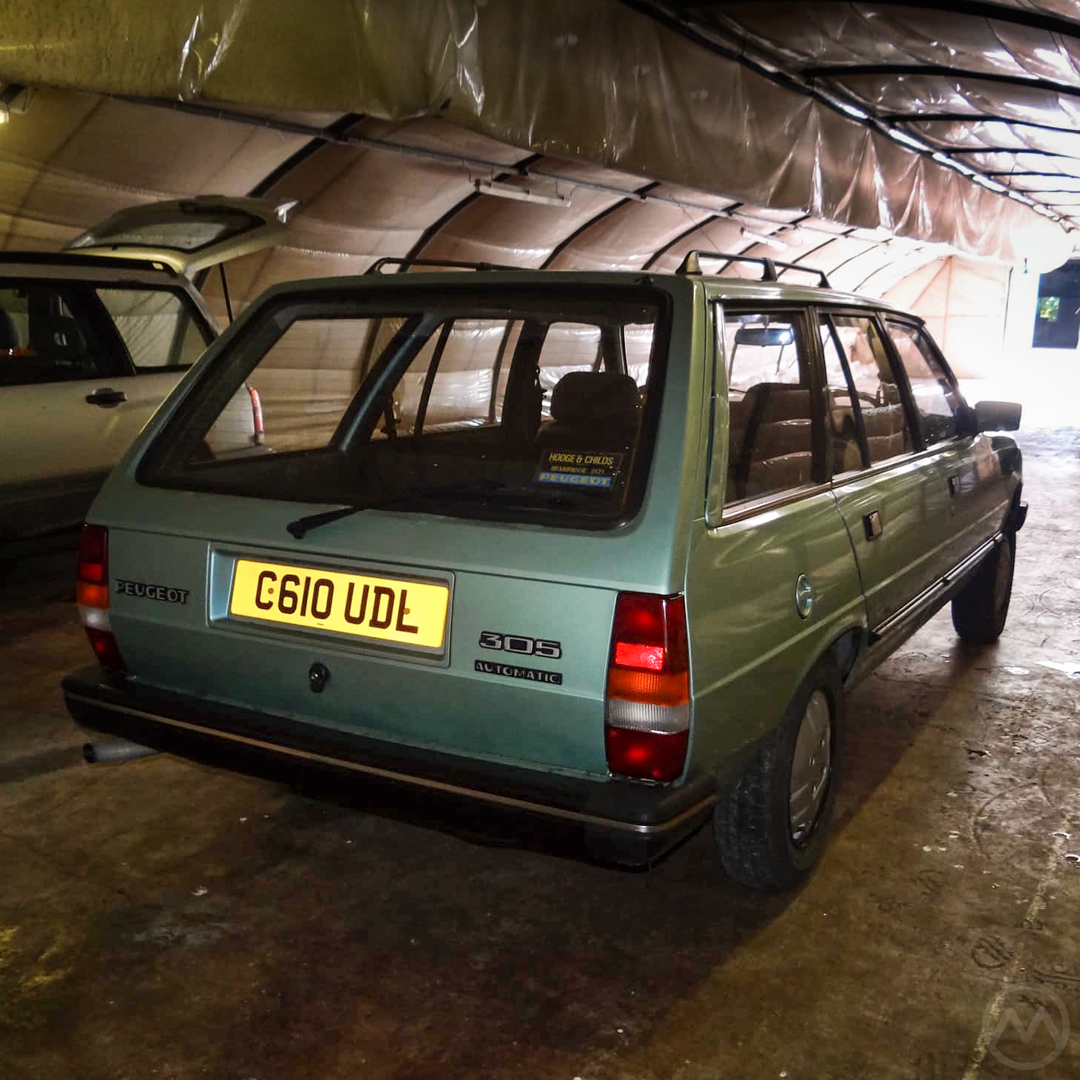
Because the ingredients were so simple, the development cycle for D4 wasn’t that long – the car debuted to a packed house at the Pavillon Gabriel in Paris in November, 1977. Hundreds of workers, dealers, and VIPs were on hand for the launch, though many had one question: “Why is it called the 305 when it’s a replacement for the 404?”
Director Baratte addressed this question directly in his opening speech. The 305 was to be the first of a new generation of Peugeots stylistically, but the company’s front-drivers were distinctly different from it’s older rear-drive cars. Since it was technically close to the 304 and represented the future of Peugeot’s development pipeline, it would bear the 3 instead of the 4. A theoretically “405” in 1977 was conceived of as a rear-drive car.
In fact, the 305’s launch was a real inflection point for the company. After it went on sale, Peugeot developed only one more conventional rear-wheel-drive car, the 505.
By the early 1980s it was clear that all the emphasis on future Peugeots would be of the traction avant variety. OPEC II had something to do with that, but so did the huge success Peugeot had with its front-drive models (104, 204, 304), opening up large swathes of customers to the brand who would not have tried a larger 404 or 504. When the “405” name finally did arrive in 1987, it was as a 305 replacement and front-wheel drive.
There was another factor at work too, and one that was also emphasized by the impact of both fuel crises. The growing popularity of the Diesel 304 and subsequent Diesel 305.
Peugeot had been among the very first manufacturers to introduce commercially-successful diesel small cars on both the 204 and 304 range. Their performance was very limited, but Peugeot handily beat Volkswagen and others to market in this game. The 305’s first few months were gasoline-only, using the XL5 engine, but it soon gained a diesel variation of its own – the XID, developed from the same architecture as the XR/XL engines descended from the 204.
This first diesel 305 was, like the 204 and 304 diesel before it, a road slug. Just 50 horsepower and four speeds. But it got amazing mileage and was as tough as any commercial truck engine. When OPEC II hit, it was perfectly positioned to take advantage. The 304 continued alongside as a cheaper alternative into 1980.
The 305 was a good seller right from the start for Peugeot, and in 1979 it was France’s third-best selling car behind it’s new arch rival, the Renault 18, and the market leader, the R5. It was popular in large swathes of Western Europe and the United Kingdom, but was never exported to the USA. Peugeot’s American arm preferred to stick to the big Peugeots and play “French Mercedes.”
The XU engines and the 1980s
The 305 was doing just fine in 1979, but Sochaux was hard at work on improving it anyway and designing a new family of engines that would go into future products for it’s ever expanding range. Peugeot had become PSA in 1976 with the full integration of Citroën, and in 1979 it bought Chrysler’s European assets, which were lumped together into Talbot, though the Simca name continued for a little while afterward.
The 305’s engines were old but durable, and its proven mechanicals made it a great place to test out what would become a ubiquitous and spectacularly popular series of powerplants: Peugeot’s XU gasoline and XUD diesel engines. They were ostensibly designed for entirely new products like the forthcoming 205, but 305s were used to test them and got them early on. They arrived in 1982 when the 305 was given a slight facelift and a heavily upgraded interior.
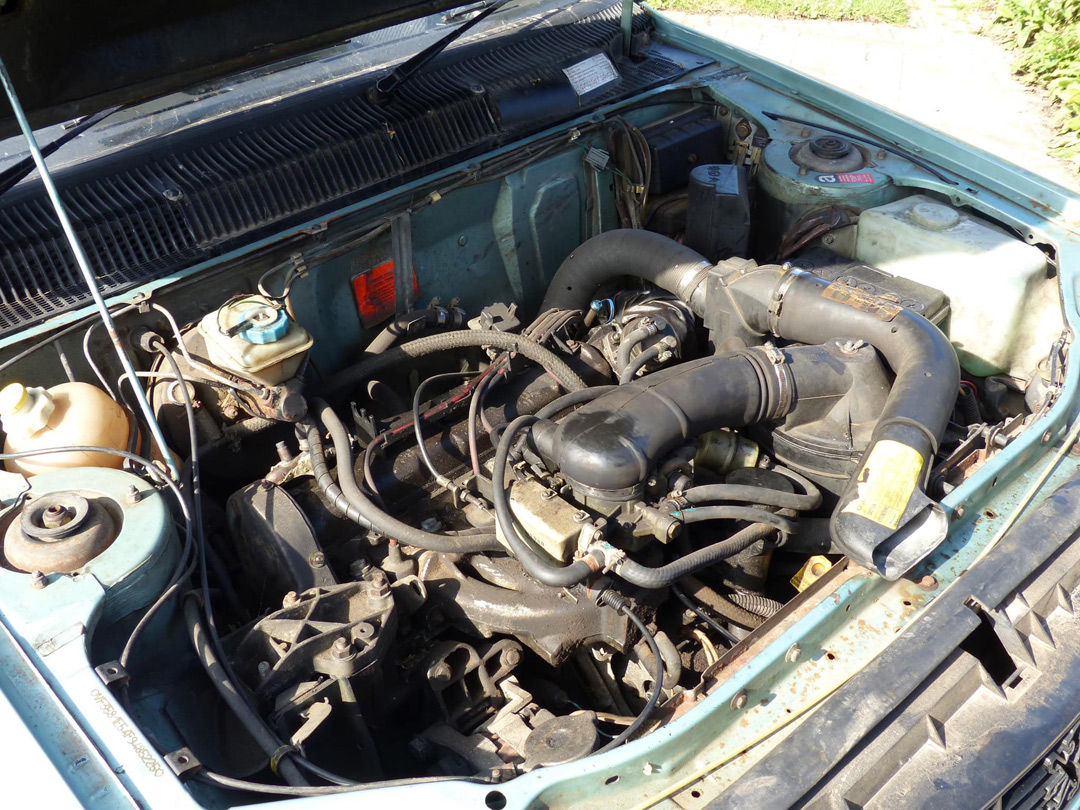
The diesels in particular were a real revelation – they were about 10-15% lighter, made more power, and were much smoother than the old XIDs. They also allowed for a modern side-on gearbox rather than the gearbox-in-the-sump arrangement of the older cars. Lower end 305s kept using the older powerplants for a while, but the XU was definitely a better engine. In the gas lineup, they came in 1.5 and 1.9 liter form, as a diesel just a 1.9. Now with five speeds, they were more tractable too.
A series of advanced lightweight 305 concepts were shown in the early 1980s – the VERAs. That stood for Véhicule Économe de Recherche Appliquée, but the 305 versions never really resulted in any road cars of note. The third iteration of the VERA served as a prototype for the upcoming 309, then under development as the Talbot Arizona.
In the meantime, Peugeot was hard at work on the launch of the 205 and the new range of Peugeots that would follow. During the 1980s the XUs found their way into virtually every PSA product and even many cars which were not produced by PSA. Makes as diverse as Lada, Rover, and Suzuki used XU diesels.
The gasoline XUs were at the heart of a variety of very fast and fun PSA products including the famous 205 GTi. The first attempt at a “fast” 305 was the 1.9 XU 305 S in 1982, but its early gearboxes proved a little weak, and it wasn’t all that fast compared to much of its competition.
In 1984, the 305 got a more powerful 1.9-liter XU5S with 105 hp. This new car was the 305GTX, complete with tape stripes and other “look fast” accessories like a deck spoiler and alloys. A 105-hp it wasn’t slow for such a light car, but it wasn’t much of a performer. A wagon was offered too. Both could do zero-to-60 in about 11 seconds.
Keep in mind, these were the fastest versions of the 305. It wasn’t a bad handler but hardly the corner carver it’s younger sibling the 205 was, so performance was …er, a secondary consideration. Most of the 305’s sales were as workaday family cars or as commercial vans – the van and wagon versions of the car were economical to use and very durable.
In another nod to tradition, when the 305 was replaced by the new front-drive 405, the van and wagon versions continued on for a while, with the van being the largest commercial car offering that PSA had at the time, and still a popular choice for tradespeople. There was also a 205 van, but it was much smaller.
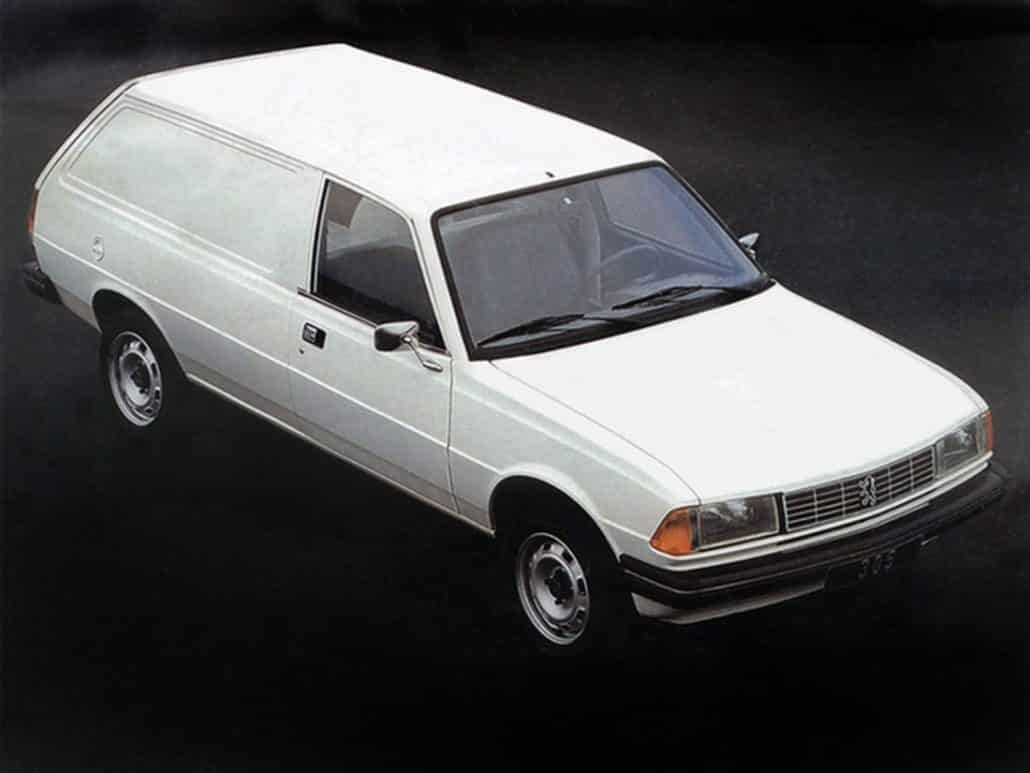
The 305 went out with a whimper as the 405 debuted to huge sales and a European Car of the Year win for 1988. Hardly anybody noticed the leftover 305s by then, but the car had been enormously successful: 1.7 million 305s were built in just over 11 years and many remained in service for a long time.
The first of the “05s,” all that followed except for the 505, already under development when the Peugeot 305 premiered, were front drivers. The huge success of the 205 eclipsed the earlier front-drive Peugeots in most respects, but it’s the 305 where the old and the new met.
Since there are virtually no 305s in North America, our feature car today comes from Northern Ireland.
This green wagon is owned by Kieran Donnelly, who also took these photos, and is powered by an XU5 gasoline four. Unusually, it’s an automatic. Peugeot used ZF automatics after the switchover to the XU engines. Donnelly is a big 305 fan and is also working on a 1.9L turbodiesel conversion on another 305. No turbodiesel versions of the 305 were made by Peugeot, but it’s a simple conversion.
(Green 305 Wagon Photos courtesy Kieran Donnelly. If you’d like to submit an unusual car, please contact us!)

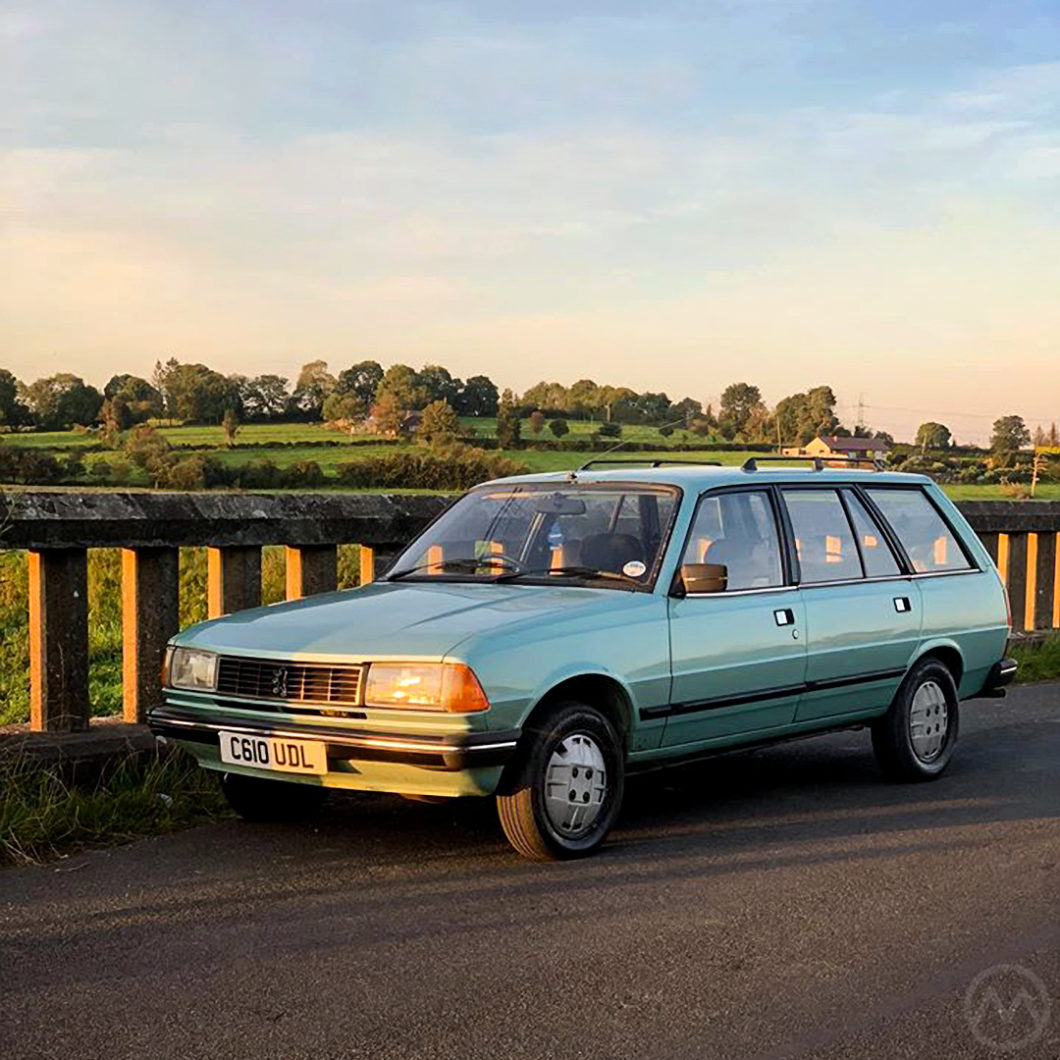
I had the pleasure of driving one in the early 90’s. It was fast, very comfortable with excellent road manners. Very underrated! It was my girlfriend’s parents car… so lots of good memories as well!